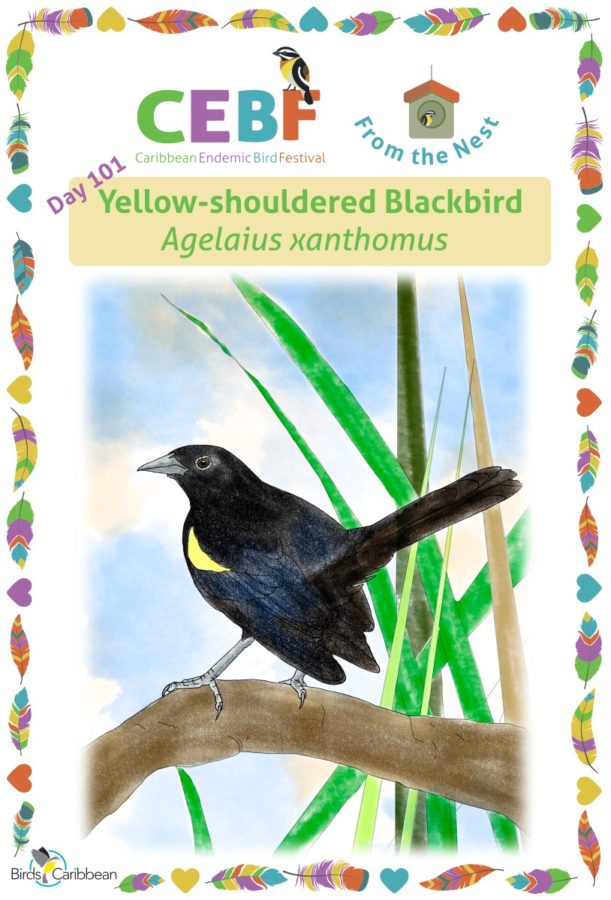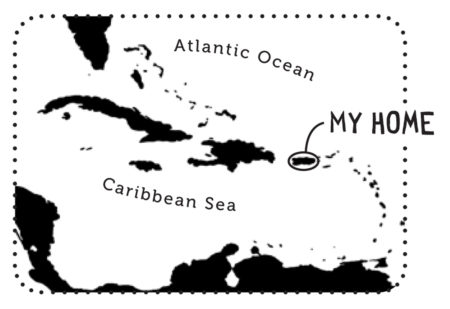Celebrate the Caribbean Endemic Bird Festival (CEBF) with us! Our theme in 2022 is “Loving Birds is Human Nature”. Have fun learning about a new endemic bird every day. We have colouring pages, puzzles, activities, and more. Download for free and enjoy nature with your family at home.
Endemic Bird of the Day: Yellow-shouldered Blackbird
If you find yourself birding near the coasts of Puerto Rico, you may be lucky enough to witness the Yellow-shouldered Blackbird (Agelaius xanthomus) showing off its golden epaulets on the base of its wings. The yellow feathers that give it its name contrast beautifully with the shiny dark plumage that covers the rest of its body and boldly announces its rank as the “capitán” (Spanish for “captain” and one of its common names in Puerto Rico) of Puerto Rican birds.
Their size ranges from 20 to 23cm with males usually slightly larger than females. However, both sexes are identical when it comes to plumage. Their common call consists of a short “check” or nasal “chwip,” usually performed while perched on a branch and flicking their tail. Although considered by some as mostly insectivorous (feeding mainly on insects), Yellow-shouldered Blackbirds have a diverse diet that includes mollusks, fruits, seeds, nectar, animal feed, and processed food such as granulated sugar.
At the end of the 19th century, the Yellow-shouldered Blackbird was found throughout the entire archipelago of Puerto Rico. However, it is currently classified as Endangered, its decline due to loss of habitat and brood parasitism by the invasive Shiny Cowbird. Introduced predators like rats and the Indian Mongoose have also had a serious impact on the blackbird’s population size. Currently, due to all these threats, the Yellow-shouldered Blackbird can only be found on coastal habitats scattered throughout the main island of Puerto Rico and Mona Island. The largest population resides in southwestern Puerto Rico with approximately 500 individuals.
The Yellow-shouldered Blackbird’s breeding season typically occurs between the months of March and September but can stretch through November in rainy years. They make a nest in the form of a cup where the female lays between 2 to 5 speckled, light-blue eggs. Nests are commonly built on branches of mangroves or cavities of dead trees. However, they may also place their nests on palm leaves, coastal cliffs, and manmade structures. In southwestern Puerto Rico, to help conserve the species, biologists have been experimenting with providing Yellow-shouldered Blackbirds with PVC structures in which to place their nest. It was hoped that these structures would reduce the risk of predation by mammals and simplify the monitoring and control of brood parasitism. These have been highly successful at helping increase this species’ reproductive success. Nevertheless, multiple studies are being conducted to determine how these could be modified to further increase the reproductive success of this unique species. Learn more about this species, including its range, photos, and calls here.
Colour in the Yellow-shouldered Blackbird
Download our West Indies Endemic Bird colouring page. Use the photos below as your guide, or you can look up pictures of the bird online or in a bird field guide if you have one. Share your coloured-in page with us by posting it online and tagging us @BirdsCaribbean #CEBFfromthenest
Listen to the calls of the Yellow-shouldered Blackbird
The calls of the Yellow-shouldered Blackbird include a sharp “chulp” sound.
Puzzle of the Day
Click on the image below to do the puzzle. You can make the puzzle as easy or as hard as you like – for example, 6, 8, or 12 pieces for young children, all the way up to 1,024 pieces for those that are up for a challenge!
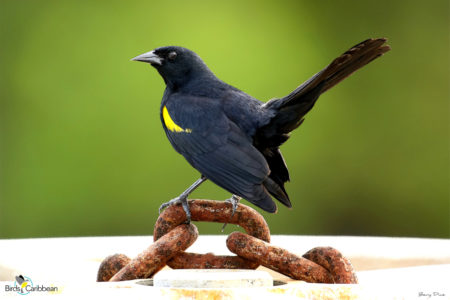
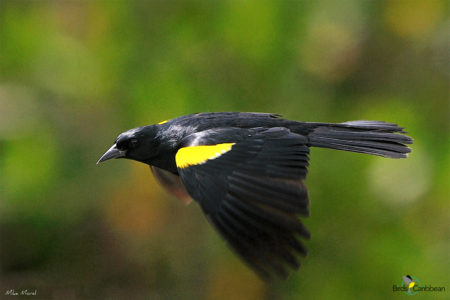
Activity of the Day
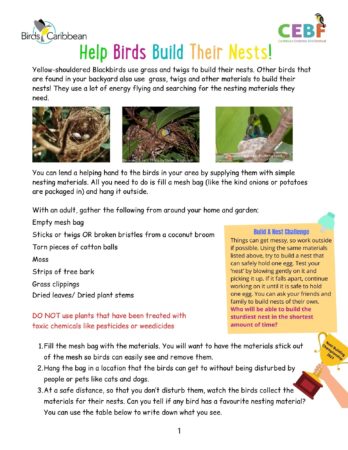 FOR KIDS: Todays featured endemic bird, the Yellow-shouldered Blackbird, builds its nests in on branches of isolated mangroves, in crevices or hollows of dead trees, and sometimes in palm trees. The females build the nest using dried grass, twigs and leaves, making the perfect place in which to lay their eggs and raise their chicks. You could give the birds nesting near your house or in your garden a helping hand with making their perfect nest, with our nest-material activity.
FOR KIDS: Todays featured endemic bird, the Yellow-shouldered Blackbird, builds its nests in on branches of isolated mangroves, in crevices or hollows of dead trees, and sometimes in palm trees. The females build the nest using dried grass, twigs and leaves, making the perfect place in which to lay their eggs and raise their chicks. You could give the birds nesting near your house or in your garden a helping hand with making their perfect nest, with our nest-material activity.
With an adult helping you can gather twigs, grasses and other safe things birds like to use for their nests from around your home and garden. Put out these materials, and see who arrives to make use of them! You can download full instructions here.
Be sure to follow our suggestions for nest materials, these have been selected especially to be suitable for bird nests, some things might be dangerous for birds and their chicks if they put them in their nests. You can keep note of who visits and which things they choose to include in their nests – do some birds have a favourite type of nest material?
FOR KIDS AND ADULTS: Watch this report from Puerto Rico below about how using man-made nest boxes can help Yellow-shouldered Blackbirds! In this video you can find out about the PVC “drainpipe” like structure that biologists are providing for Yellow-shouldered Blackbirds to nest in. These nest boxes have be very successful in boosting the numbers of Yellow-shoulder Blackbird chicks that fledge! They also make it easier for biologists to monitor Blackbird nests and chicks. For example, via the David S. Lee Fund for the Conservation of Caribbean Birds, BirdsCaribbean are funding Jean Gonzalez Crespo track Blackbird chicks after they fledge from the nest and estimate their survival during this critical period. His work will help local and federal agencies determine whether survival rates before breeding are contributing to population declines, and identify the factors that influence survival.
You can also enjoy this video of a Yellow-shouldered Blackbird the wild!

